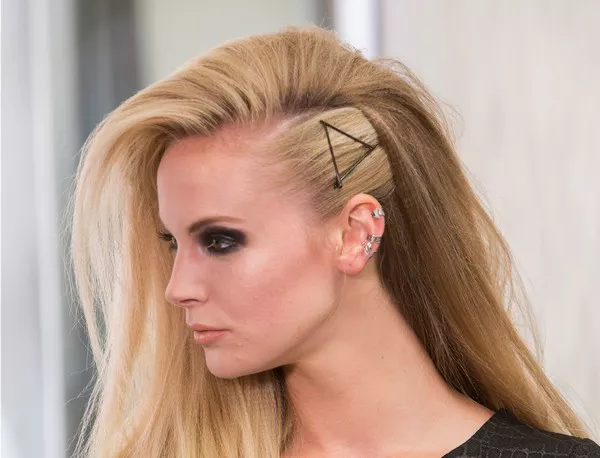They say that a person’s crowning glory is their hair, and it’s true that healthy and luscious locks can enhance our overall appearance. However, losing some hair on a daily basis is a natural part of the hair growth cycle. But how much hair loss is considered normal? In this article, we’ll dive into the intricacies of hair loss, explore the factors that contribute to it, and uncover the truth behind common myths. Get ready to separate fact from fiction as we unveil the secrets to maintaining a vibrant mane.
Understanding the Hair Growth Cycle:
Before we delve into the concept of normal hair loss, it’s important to understand the hair growth cycle. Our hair goes through three stages: anagen (growth phase), catagen (transition phase), and telogen (resting phase). The anagen phase lasts for about 2-7 years, during which the hair actively grows. The catagen phase is a short transition period, while the telogen phase is a resting period that lasts for approximately 2-4 months before the hair sheds and a new cycle begins.
Defining Normal Hair Loss:
On average, it is normal to lose between 50 and 100 strands of hair per day. This may vary depending on factors such as age, genetics, health conditions, and hair care practices. It’s crucial to note that hair loss is not evenly distributed throughout the scalp. Shedding occurs randomly, which can make it seem like more hair is being lost than is actually the case.
Factors Affecting Hair Loss:
Several factors can contribute to hair loss beyond the natural shedding process. Here are some of the most common ones:
1.Age: As we age, the rate of hair growth slows down, and the hair becomes thinner. It’s normal for older individuals to experience gradual hair loss.
2.Genetics: Hereditary factors play a significant role in hair loss. Androgenetic alopecia, also known as male or female pattern baldness, is the most common genetic cause. This condition affects both men and women, leading to a gradual thinning of hair over time.
4.Hormonal Changes: Hormonal imbalances due to pregnancy, menopause, or thyroid disorders can trigger temporary hair loss. The good news is that this type of hair loss is often reversible and resolves on its own.
5.Stress: High levels of stress can disrupt the hair growth cycle and cause excessive shedding. Emotional or physical stress can lead to a condition called telogen effluvium, where a significant number of hairs enter the resting phase simultaneously.
6.Poor Nutrition: A diet lacking essential nutrients, especially proteins, vitamins (such as biotin), and minerals (like iron and zinc), can affect hair health and lead to increased hair loss.
7.Hairstyling Practices: Excessive use of heat styling tools, tight hairstyles (like ponytails and braids), chemical treatments, and harsh brushing can damage the hair follicles and contribute to hair breakage and thinning.
Separating Myths from Reality:
There are many misconceptions surrounding hair loss. Let’s debunk a few of the most common ones:
1.Wearing hats causes hair loss:
Wearing hats does not directly cause hair loss. However, if the hat is excessively tight or dirty, it may lead to hair breakage. Opt for clean, loose-fitting hats to prevent potential damage.
2.Shampooing too often causes hair loss:
Regular shampooing does not cause hair loss. In fact, keeping the scalp clean and free of excess oil and debris promotes a healthy environment for hair growth. However, using harsh shampoos or over-washing can strip the hair of its natural oils, making it brittle and prone to breakage. Finding a balance and using gentle, nourishing shampoos is key.
3.Wearing wigs or extensions causes permanent hair loss:
When worn properly and with proper care, wigs and extensions do not cause permanent hair loss. However, excessive tension from poorly attached extensions or constant pulling on the hair can lead to a condition called traction alopecia. It’s essential to give your hair regular breaks from extensions and ensure they are applied by a professional.
4.Hair loss only affects men:
While it’s true that male pattern baldness is more commonly associated with men, women also experience hair loss. Female pattern hair loss may manifest as thinning hair or widening of the part line. It’s important to address hair loss concerns in both men and women and seek appropriate treatment if needed.
When to Seek Help:
While a certain amount of hair loss is normal, there are instances when it’s essential to seek professional advice. If you notice sudden and significant hair loss, hair loss at a young age, or hair loss accompanied by itching, redness, or pain, it’s recommended to consult a dermatologist or a trichologist. These experts can assess your condition, identify the underlying cause, and provide suitable treatment options.
Maintaining Healthy Hair:
To keep your hair in top shape and minimize hair loss, consider incorporating the following tips into your routine:
1.Follow a balanced diet: Ensure you’re getting adequate nutrients, including proteins, vitamins, and minerals, to support hair health.
2.Handle your hair gently: Avoid excessive brushing, use wide-toothed combs, and be mindful of hairstyles that tug or pull on the hair.
3.Limit heat styling: Minimize the use of hot tools like flat irons and curling irons. If you must use them, apply a heat protectant and use the lowest heat setting possible.
4.Protect your hair from the elements: Shield your hair from excessive sun exposure, chlorine, and harsh weather conditions by wearing hats or using protective products.
Conclusion:
Hair loss is a natural process that occurs as part of the hair growth cycle. While losing 50 to 100 strands per day is considered normal, individual experiences may vary. Understanding the factors that contribute to hair loss, debunking myths, and adopting healthy hair care practices can help maintain a vibrant mane. Remember, if you have concerns about excessive or sudden hair loss, it’s best to consult a professional who can provide guidance tailored to your specific needs. Embrace your hair and give it the care it deserves for a head-turning, confidence-boosting look.

